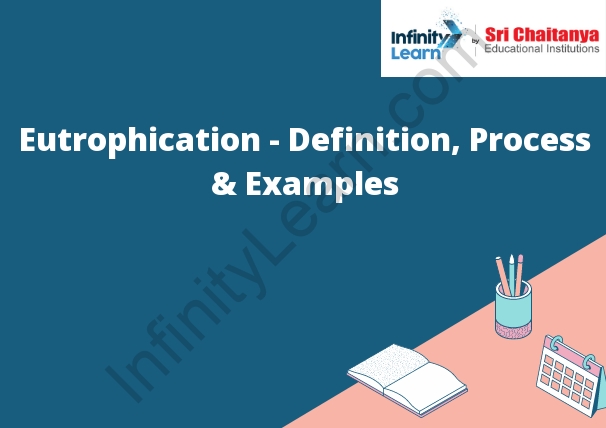Table of Contents
Eutrophication
Eutrophication is a process that occurs when a body of water becomes enriched with chemical nutrients, usually phosphorus and nitrogen. These nutrients stimulate the growth of algae and other aquatic plants. The algae then die and decompose, using up the water’s oxygen. This can result in the death of fish and other aquatic organisms.

- Eutrophication is a major environmental concern, especially in coastal areas. It can cause the loss of valuable fisheries and tourism resources. It can also lead to the formation of harmful algal blooms, which can produce toxins that can be harmful to humans and animals.
- There are several ways to reduce the impact of eutrophication. One is to reduce the amount of nutrients entering the water. This can be done by reducing the amount of fertilizer used in agriculture, and by treating wastewater before it is released into the environment. Another is to improve water circulation, so that the water can mix and exchange oxygen more effectively. Finally, it is important to protect and restore coastal wetlands, which can act as a natural filter and help to reduce the amount of nutrients entering the water.
Eutrophication Process
- Eutrophication is a natural process that occurs in any aquatic system as a result of the addition of organic or inorganic materials. The process is accelerated by human activity, such as the discharge of wastewater into lakes, rivers, and oceans. The addition of these materials causes an increase in the growth of algae and other aquatic plants. The algae use the available nutrients to grow, and as they die and decompose, the process of eutrophication is accelerated.
- Eutrophication can lead to a number of problems in aquatic ecosystems. The increased growth of algae can lead to the formation of algal blooms. Algal blooms can produce toxins that can be harmful to aquatic life and to humans. The increased growth of aquatic plants can also lead to the decline in the quality of the water due to the decreased availability of oxygen. This can cause the death of aquatic life, and can also lead to the development of harmful bacteria and other aquatic organisms.
- The process of eutrophication can be slowed or stopped by reducing the amount of organic and inorganic material that is discharged into aquatic ecosystems. Wastewater treatment plants can be used to remove these materials from wastewater before it is discharged into waterways. Some measures can also be taken on land to reduce the amount of runoff that enters waterways. Implementing these measures can help to improve the quality of water in aquatic ecosystems and protect the health of aquatic life.
Examples:
- Water is essential to life. It is important for drinking, agriculture, and industry. It is also necessary for ecosystems to function properly. Unfortunately, many water bodies around the world are being degraded by eutrophication. This occurs when an excessive amount of nutrients, such as nitrogen and phosphorus, enter the water. This causes the growth of algae and other aquatic plants. The plants then die and decompose. This process uses up oxygen in the water, which can lead to the death of fish and other aquatic organisms.
- Eutrophication is a major problem in the Chesapeake Bay. The bay is the largest estuary in the United States. It is home to more than 3,600 species of plants and animals. Unfortunately, the bay is also plagued by eutrophication. The excess nutrients in the water are causing the growth of algae and other aquatic plants. The plants then die and decompose. This process uses up oxygen in the water, which can lead to the death of fish and other aquatic organisms.
- Eutrophication is also a problem in the Gulf of Mexico. The Gulf of Mexico is a large body of water that is home to a variety of fish, marine mammals, and seabirds. The excessive nutrients in the water are causing the growth of algae and other aquatic plants. The plants then die and decompose. This process uses up oxygen in the water, which can lead to the death of fish and other aquatic organisms.
- Eutrophication is also a problem in the Baltic Sea. The Baltic Sea is a large, saltwater sea that is located in Northern Europe. The excess nutrients in the water are causing the growth of algae and other aquatic plants. The plants then die and decompose. This process uses up oxygen in the water, which can lead to the death of fish and other aquatic organisms.
- Eutrophication is a major problem in many other water bodies around the world. It is causing the growth of algae and other aquatic plants. The plants then die and decompose. This process uses up oxygen in the water, which can lead to the death of fish and other aquatic organisms.



